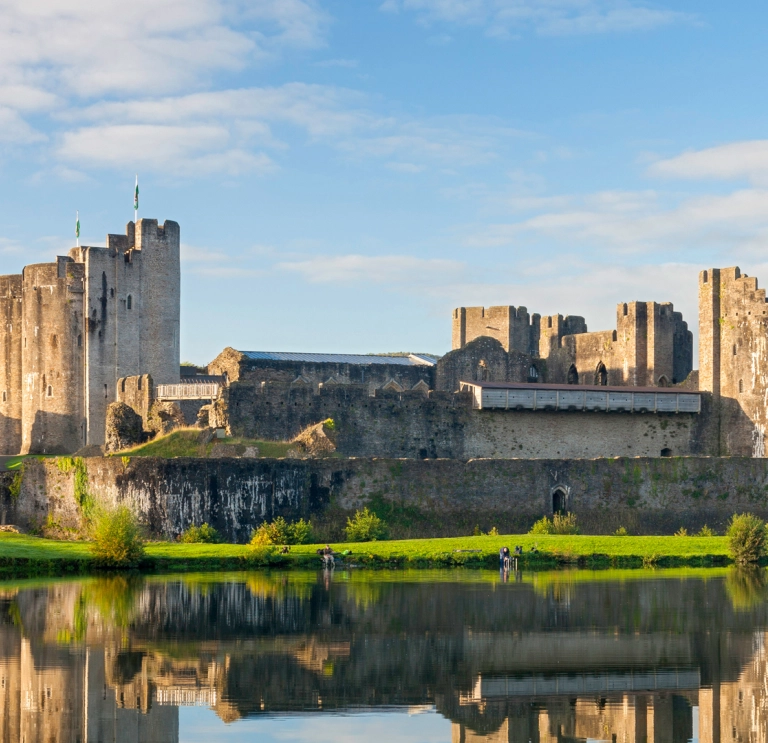From over 600 castles ever recorded, more than 400 castles in Wales are still standing or in ruins, so wherever you go on holiday in Wales you won't be too far from a historic site. But where to start?
If you don’t have time to visit every single one, this selection of ten to visit are a good option to start you off.
The UNESCO-listed Beaumaris, Conwy, Caernarfon, and Harlech castles are among the most significant and breathtaking in Wales. If you only have limited time for your visit to North Wales, this trail of four majestic castles can be explored in one unforgettable, castle-packed weekend.
If you're looking for a 'package deal', how about a castle with on-site accommodation? Live like royalty with one of these castles you can stay in!
What is the oldest castle in Wales?
Castell Conwy (Conwy Castle) is regarded as one of the most magnificent medieval fortresses in Europe. The castle, and its three quarters of a mile (1.3 km) ring of town walls, have World Heritage status.
This remarkable fortress was built in an astonishing four-year period, between 1283 and 1287, and remains incredibly well-preserved today: it contains the most intact set of medieval royal apartments in Wales. If you have a head for heights, climb one of the castle's eight tremendous towers for breathtaking views of the harbour and the narrow streets of Conwy below.

What is the biggest castle in Wales?
Castell Caerffili (Caerphilly Castle) in South Wales is the largest castle in Wales, and the second largest in Britain after Windsor Castle. The magnificent fortress covers 30 acres and boasts massive walls, towers, and gatehouses. It is three times the size of Principality Stadium, in the capital Cardiff, and a must-see for anyone visiting the area.


What is the smallest castle in Wales?
It is believed that Castell Weble (Weobley Castle) is one of the smallest castles in Wales. It has views of the beautiful Gower peninsula. This former elegant family home with a watchtower. Built by the wealthy de la Bere family, stewards to the lords of Gower 700 years ago, It suffered serious damage during the uprising of Owain Glyndwr in the early 15th century.

What is the most unusual castle in Wales?
Every castle in Wales has its own special characteristics. Many have fascinating histories of ghosts, television dramas, and miraculous survival stories, so we couldn't possibly choose a single one! While Wales' famous castles are undoubtedly impressive, it's the lesser-known ones that offer the most unique charm and so make for some of the most unusual castles to visit.






